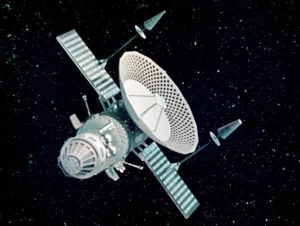A segment of the Soviet spacecraft Kosmos 482, which was launched on March 31, 1972, is projected to re-enter Earth’s atmosphere around May 10, 2025, after remaining in orbit for over five decades.

What is Kosmos 482?
- Kosmos 482 was launched by the Soviet Union as part of its Venera mission series, with the goal of delivering a lander to the surface of Venus.
- Despite its intended destination, a malfunction during launch left the spacecraft trapped in low Earth orbit.
- Although the main body of the spacecraft disintegrated over time, the 500-kilogram lander module continued to orbit and is now expected to make an uncontrolled re-entry.
Reason for Mission Failure
- A timing error led to the premature shutdown of the rocket’s upper stage, which was supposed to propel the probe beyond Earth’s gravitational influence.
- As a result, Kosmos 482 never left Earth’s vicinity and became stuck in orbit.
- The orbital module burned up, but the lander segment, due to its sturdy design, has remained in space since 1972.
About the Venera Mission Series
- The Venera programme, active from 1961 to 1984, was a Soviet interplanetary exploration initiative focused on the planet Venus.
- Out of 28 total missions, 13 probes successfully entered Venus’s atmosphere, and 10 managed to reach the planet’s surface.
- Venera 8, which was the twin spacecraft of Kosmos 482, achieved a successful landing in 1972, transmitting data for approximately 50 minutes from the Venusian surface.
Venus Environment and Venera Lander Design
- The surface of Venus presents extreme conditions with temperatures near 462°C and atmospheric pressure 92 times that of Earth.
- To withstand such harsh environments, Venera landers were equipped with:
- Spherical titanium pressure hulls
- Insulating heat shields
- Thermal control systems
- Robust internal pressure regulation




